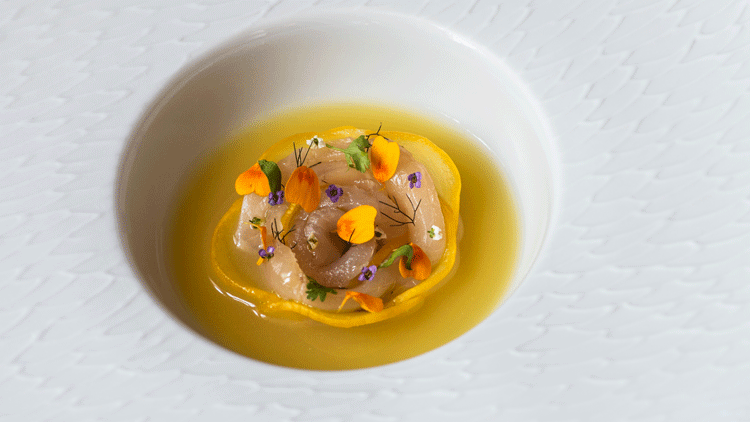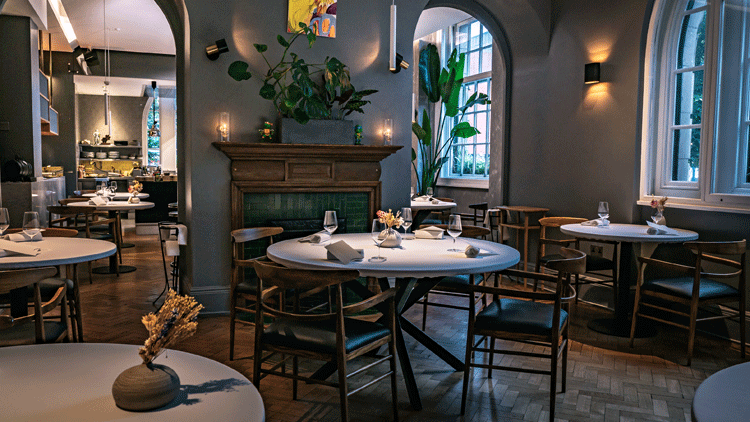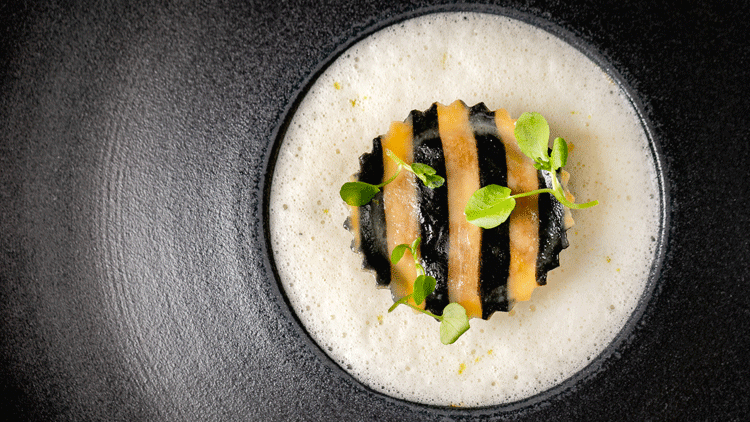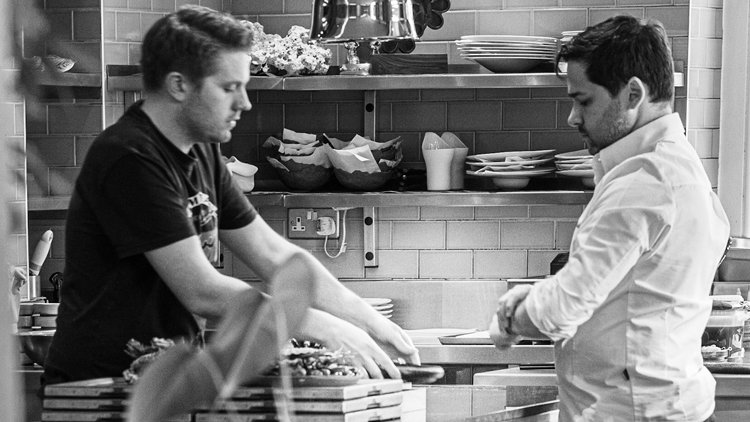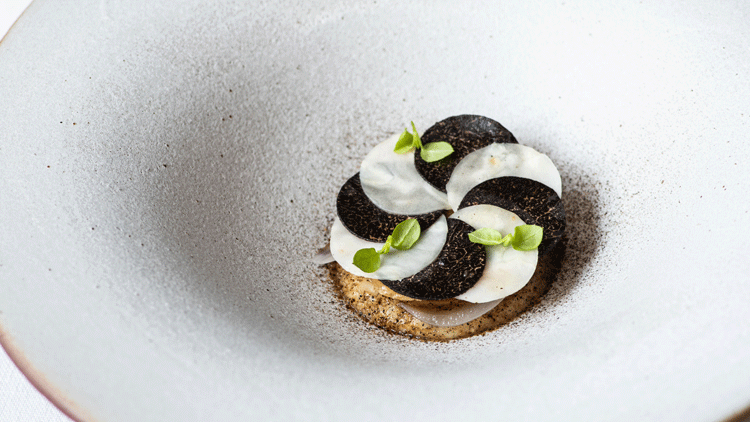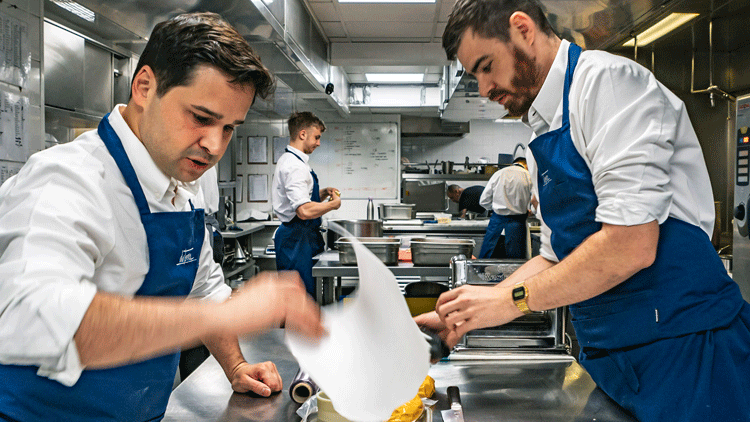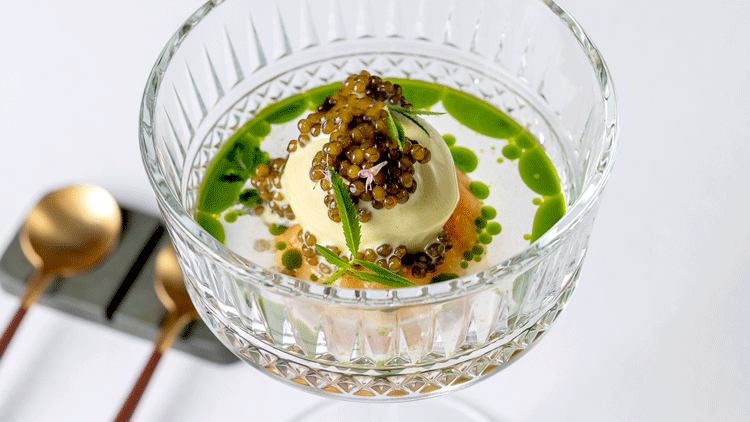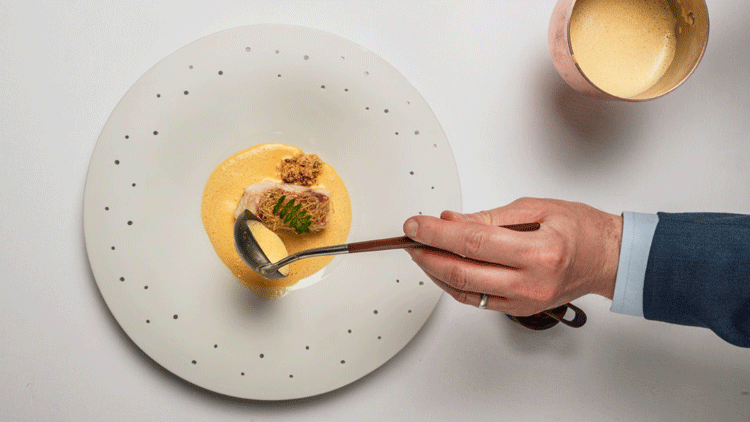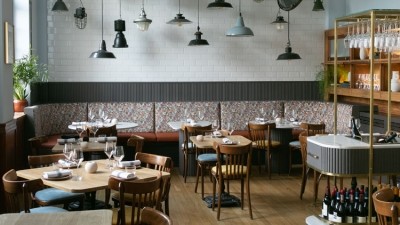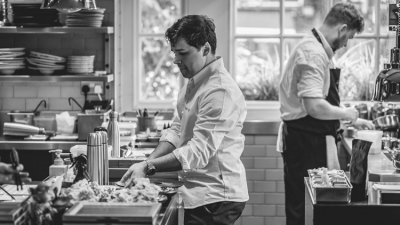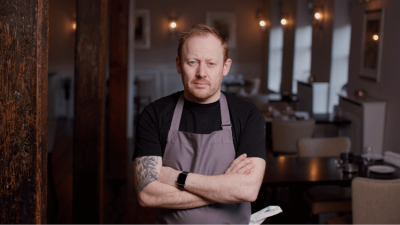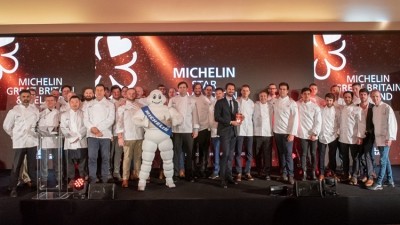Viva Brazil: How Rafael Cagali created one of the capital’s most singular dining experiences
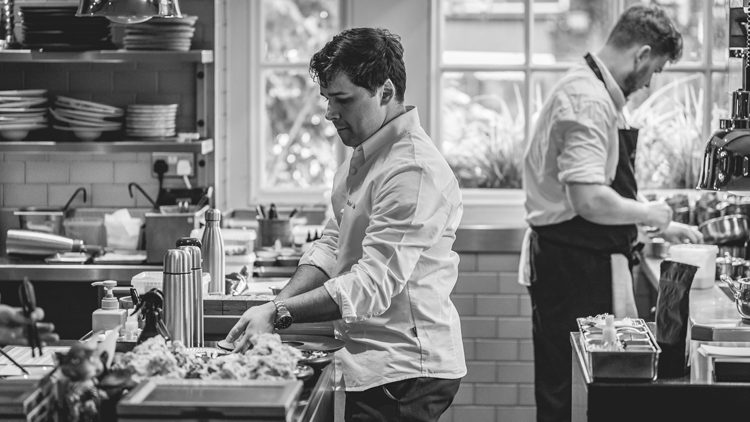
Rafael Cagali’s signature dish of moqueca – Brazil’s famed seafood stew - arrives in a beautiful copper pot garlanded with langoustine claws, coriander, okra and limes. Ornate serving vessel aside, it looks like something that might be served at a beachside restaurant in Jericoacoara. Yet here it is in a two Michelin-star restaurant in east London’s Bethnal Green.
After a brief explanation from the server, the dish is whisked back into the kitchen for an appointment with a Vitamix – the okra and langoustine heads are blended into the coconut milk-based cooking liquid – and brought back neatly plated up a few minutes later.
But while it may now look the part, the taste is far removed from anything most would expect to encounter at a refined European hotel restaurant having more in common with a Thai green curry than a bouillabaisse.
"People are surprised by how Brazilian it is. I like that,” says Cagali, who launched Da Terra in 2019 in the space that was previously home to Lee Westcott’s The Typing Room and, before that, Nuno Mendes’ Viajante. “But I don't want Da Terra to be seen as being a Brazilian restaurant. It's a difficult balance in that sense."
Cagali’s moqueca is one of a number of dishes that explore the Brazilian-born chef’s roots (see Da Terra in four dishes, below). Developed during lockdown, the course is a relatively recent addition to the menu and is served with a little pot of tear drop-shaped pickled Brazilian chillies that are designed to help cut through the richness of the coconut milk.
Other dishes on Da Terra’s £185 tasting menu (a slightly abridged version is available at lunchtimes for £150) include raviolo of duck with whey and watercress; mussel custard with seaweed, trout roe and sake kasu (a by-product of sake production); and English raspberries with sheep’s yoghurt and 20-year-old balsamic.
Turtle power!
Da Terra’s high-ceilinged dining room seats around 40 covers. With its muted colours and Scandi chairs, the space has a comparable aesthetic to many other ambitious contemporary restaurants. But the playful personalities of Cagali and his husband Charlie Lee – who oversees front of house as restaurant manager – shine through.
Standing guard at the pass is a statue of Raphael of Teenage Mutant Ninja Turtles fame. “When I was growing up in Brazil, I was nicknamed turtle on account of my chubby cheeks,” Cagali explains. “I’m a serious guy but I like to have fun too.”
Raphael was purchased shortly after the restaurant won its first Michelin star just eight months after opening with Michelangelo, Leonardo, Donatello and the foursome’s rat sensei Splinter entering the fray as the restaurant won a second in 2021. Not bad for a chef that only started cooking at 21.
Born into a culinary melting pot
Born and raised in São Paulo, Cagali is Italian on his father’s side and a mix on his mother’s side, including some Portuguese, some Spanish and some Italian. The whole of Brazil is a culinary melting pot, but nowhere more so than the country’s largest city.
“I grew up eating all sorts of things. Brazil is a new country so there are lots of different food cultures. What people who haven’t been might not know is that nearly everything is adapted to the Brazilian way. People like big portions, for example our pizzas have so many toppings on them you can’t pick them up.”
Cagali’s mother was in catering when he was growing up and ran various businesses including a restaurant called Per Kilo, in which people served themselves and paid by weight. While Cagali enjoyed spending time in the restaurant he looked to follow in the footsteps of his businessman father and studied economics at university.
The world of finance, however, wasn't for him. Not sure what to do, Cagali came to London in his early 20s to improve his English and ended up working in a basic but well-run brasserie in Fulham. “It wasn’t high end, but the food was fresh and the chef took things seriously. I guess he saw something in me because he pushed me and eventually encouraged me to enrol at catering college.”
Cagali studied for a year at Westminster Kingsway before working at a number of central London places including Palm Court Brasserie, St James's Italian Japanese restaurant Shumi and another that he says Is probably best left unnamed. “I saw things there that I never want to see again in my life.”
Rediscovering roots
Cagali then relocated to Italy to explore his father’s roots, working for Stefano Baiocco at Grand Hotel a Villa Feltrinelli on the western shore of Lake Garda. It was a tough experience but one that would be the making of the young chef.
“It opened my eyes to a lot of things. I was the only foreigner in the kitchen and at the time I spoke very little Italian. They had no stars at the time (the restaurant now has two) and were pushing incredibly hard. Everything had to be perfect.”
After four years Cagali left to work at several top restaurants in Spain – including Martín Berasategui’s three-star flagship in San Sebastian and Quique Dacosta’s then two-star restaurant in Alicante – before returning to the UK to do a stage at The Fat Duck.
The stage led to a permanent position. “Working at The Duck was the best decision I ever made because it’s where I met Charlie. I also found working with Heston very inspirational. Because I’d started cooking relatively late on in life, I was always surrounded by cooks who were younger than me. There was a nagging feeling I was running out of time. But Heston had started cooking very late on in life and was also self-taught, which made me feel a lot better about things.”
Cagali left the Bray restaurant, briefly returning to Brazil with Charlie before coming back to the UK to help Simon Rogan launch Fera at Claridge’s as sous chef before heading up his kitchen table concept Aulis, first within Fera and – following Rogan’s parting of ways with the top-end Mayfair hotel – at a standalone site in Soho.
“I enjoyed my time with Simon, but the Soho site was difficult because there was no support structure (the two Aulis restaurants that had come before it had been within larger kitchens). There were just two people running it which made dish development difficult as there was always mise en place to do. I left after about a year to launch Da Terra.”
Heading East
Da Terra was initially a joint project with Cagali and Spanish chef Paulo Airaudo. Though Cagali effectively led the project by virtue of being based in the UK initially Airaudo's name was front and centre due to him having a higher profile than Cagali at the time.
The pair – who met at The Fat Duck – fell out early in the project with the partnership officially coming to an end last year with Town Hall Hotel’s new owner Loh Lik Peng buying Airaudo out. Peng’s intervention solved a lot of problems for Cagali, who had also endured strained relations with the hotel’s former management (unlike the two restaurants that had come before it, Da Terra was not run in partnership with the hotel and simply rented the space)
“It was difficult at the beginning. We were very quiet initially and the management at the time were very hard on us. They did not help when things needed fixing. Things got much easier when the accolades started coming in, though,” says Cagali, who now runs the restaurant in partnership with the hotel rather than being a tenant.
Making a tricky location work
Cagali now appears to have overcome the challenges of what is generally considered quite a tough site. Bethnal Green is not an obvious location for a high-reaching restaurant and the layout of the site is tricky too, with two relatively small rooms housing both the dining room and the restaurant’s service kitchen.
“Charlie and I have lightened things up. It was very dark before. We have made more of the windows and made the décor a lot brighter. I don’t mind the kitchen. It’s not quite Fera or The Fat Duck but we make it work – it helps that we don’t do a la carte.”
That said, a kitchen refurbishment is in the offing with Cagali set to rearrange the kitchen to be better suited to his style of food. The space will become even more open and the sections will be reconfigured in line with the menu.
Going au naturel
Unusually for a UK two star, Da Terra’s wine programme is focused on low intervention wine. While occasionally controversial, such an approach is a good fit for the restaurant’s east London location and chimes with Cagali’s food style.
“There is a lot of acidity and sometimes spice too so we need to be careful. Having aged bottles of wine that cost thousands just doesn’t make sense – they just wouldn’t go with the food. Natural wine tends to work very well with acidity,” says Cagali, who is far more involved with Da Terra’s wine offer than most chefs.
The current pairing includes Austrian producer Claus Preisinger’s Fruit Loops – a blend of Cabernet Franc, Syrah and Blaufränkisch – and a bracing chardonnay from cult Jura producer Domaine des Marnes. The pairing also features sakes and beers, including a dark mild from Boxcar Brewery, which is just down the road.
Such is the success of the £115 pairing – the majority of people that drink wine with their meal go for it – Cagali, Lee and sommelier Maria Boumpa are in the process of developing a more premium option.
A two star turn
The second star has revolutionised the business, with gastronomically-minded out-of-towners in particular now much more willing to make the journey out east. “It felt very strange receiving the award while I was at home in my pyjamas, but it was a great moment," says Cagali, reflecting on hearing the news.
"I don’t think I’ve ever cried so much in my life. But I don’t talk about Michelin in my briefings. The people here have all worked in great places, so they know what is required and the direction in which we are headed.”
Da Terra in four dishes
Arctic Char: Houghton Springs/Courgette/Tucupi
This pretty dish is essentially a take on tiradito, although Cagali avoids making the link known to his guests, so they go in with no expectations. It’s a surprisingly complex plate of food to put together, with the acidity that cures the fish at table provided by fermented cassava juice. “Tucupi is made with wild manioc root. It’s a key ingredient for Amazon natives. It’s complicated to make - we grate it, get the juice out, ferment it and then boil it – but it’s a unique product that nobody else is using over here.”
The Chicken: Wings/Liver/Foot/Yolk/Onion
On Da Terra’s menu since day one, Cagali’s The Chicken dish – or rather dishes – celebrates nearly every bit of the bird, with elements including wings, hearts, liver and even feet, which Cagali and team somehow debone prior to deep frying. The intense flavour of all elements is partly down to the kitchen pretty much juicing an additional chicken each service to create various jus and glazes.
Moqueca: Wild Halibut/Palm Heart/Farofa
Cagali’s take on the famed Brazilian stew moqueca (pronounced mo-keh-kah) takes its cues from the version developed in the north-eastern state of Bahia. Now famous across the country, moqueca Baiana has a heavy Afro influence using coconut milk as well as fish stock as its base liquid. “It’s a complex and bold dish that’s flavoured with a paste we make from dried shrimp, lime leaves, ginger and coriander. But the key flavouring ingredient is dendê palm oil, which is acidic and turns the dish yellow. It’s essential – moqueca Baiana without dendê is like carbonara without guanciale.”
Baba: Cachaça/pistachio/N25 Kaluga Hybrid
Though the food at Da Terra is strikingly different to anywhere else in the UK, it's not that challenging. The one exception to this is Cagali's playful take on the rum baba, which is served with Brazil’s most popular spirit cachaça, which is made from fermented sugarcane juice. Featuring a baba topped with pistachio cream and a generous spoonful of high-quality China-produced caviar sitting in a pool of the fiery liquid, Cagali admits it’s a dish that tends to split the room.
